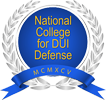OVI Breath Test Protocols in Youngstown, Ohio
Navigating an OVI (Operating a Vehicle Impaired) charge in Youngstown, Ohio can be intimidating, especially if you’ve undergone a breath test after being arrested. At Youngstown Criminal Law Group, we specialize in defending against breath test OVI charges within Youngstown and its neighboring Mahoning County areas. Such tests are critical in trials, as they are utilized by prosecutors to confirm an OVI offense.
Breath test results demonstrating a Blood Alcohol Concentration (BAC) above the legal threshold have implications not only for your trial but also for the Administrative License Suspension (ALS), which is implemented soon after arrest.
Everyone’s situation is unique—from first-time offenses to multiple charges—and understanding your case is crucial. We’re here to help with a complimentary discussion about your circumstances.
Legal Support for OVI Breath Test Incidents in Youngstown, Ohio
Ohio state law expressly forbids driving with specific levels of alcohol present in your breath. The established legal limit is .08, with increased sanctions set in motion for readings above .17. Importantly, the legality here is based on the alcohol content rather than impaired functioning or safe driving capability.
Yet, physical impairment by alcohol opens up the possibility of additional charges of operating a vehicle under influence, beyond the per se limits. Even if you resisted taking a breath test, charges could still arise based on supposed impairment.
Upon suspicion, law enforcement may conduct a breath test using one of the three state-approved machines, which include:
- Intoxilyzer 8000
- Intoxilyzer 5000
- BAC Data master
Additionally, officers sometimes employ portable devices known as PBTs (portable breath tests) for on-the-spot assessments, but it’s vital to acknowledge that PBT outcomes are traditionally inadmissible in court. However, they may be referenced during preliminary hearings to substantiate the initial investigation or arrest for OVI.
If your test reveals a BAC of .08 or higher, you will be charged with a standard OVI. Results at or above .17 lead to a ‘high test’ OVI charge, paired with separate compulsory minimum penalties.
How Ohio’s Breath Test Equipment Functions
The apparatus for breath testing in Ohio assesses the sample by utilizing infrared light. This light traverses via the sample, allowing alcohol molecules that absorb a quantifiable amount of this light to be measured, thus calculating an estimated BAC.
Ohio’s Legal Framework Around Breath Analysis
Ohio has a comprehensive set of laws, regulatory rules, and guidelines governing the administration and applicability of breath tests in court. The protocol requires these tests to be carried out within a three-hour window following the purported traffic violation. Ohio’s regulations are not only about how these machines are serviced and calibrated but also extend to the certification of operators and documentation protocols. In Ohio, legal precedents have historically limited broad challenges to the general trustworthiness of breath analyzers, although they do allow questioning the accuracy of specific test results submitted as evidence.
The recent scrutiny of the Intoxilyzer 8000 underscores a judicial openness to contest both an instrument’s overall reliability and the legitimacy of particular case results.
Understanding these nuances can be overwhelming without guidance. Our Youngstown criminal attorneys at Youngstown Criminal Law Group are equipped to steer you via these complicated details to protect your rights. If you find yourself confronted with an OVI charge that involves a breath test result, contact us for information tailored to your situation.
Remember, being informed is your first defense. We’re here to ensure that your voice is heard fairly within the Ohio legal system.
Ohio’s approval and Permit Program for Alcohol and Drug Testing
Ohio has established a stringent set of protocols governing the breath testing process for those charged with Operating a Vehicle under the Influence (OVI). These regulations are detailed in the state’s approval and Permit Program for Alcohol and Drug Testing, which adheres to the Administrative Rules issued by the Head of Health, specifically OAC 3701-53-01 via10. This program is responsible for:
- Endorsing breath testing instruments that provide evidence;
- Managing the certification of Simulator Solutions for evidential breath testing purposes;
- Setting standards for the preservation of test records and breath samples used in alcohol detection;
- Establishing proficiency requirements for personnel conducting alcohol breath tests;
- Authorizing methods to accurately measure alcohol levels in breath samples;
- Designing standard operating procedures to ensure consistent and correct functioning of breath testing instruments;
- Issuing permits authorizing the conduct of alcohol breath tests; and
- Withdrawing permits from individuals or entities that do not adhere to OAC 3701-53-01 via09.
Challenging the Accuracy of Breath Test Results in Youngstown, Ohio
Ohio’s legislation dictates that a person driving with a certain level of intoxication is considered a hazard both to themselves and others. Nonetheless, Ohio law grants defendants the right to question the precision of the breath test results associated with their cases. Juries have the jurisdiction to review the specific results, call us at (330) 992-3036 alongside any other pertinent evidence, to determine if the prosecution has substantively proven the accused’s infringement of the law, as cited in State v. Tanner, 15 Ohio St. 3d 1 (1984).
The verdict in “State v. Hassler, 115 Ohio St. 3d 322 (2007)” further provides that blood samples, even when collected outside the predefined allowable period according to R.C. §4511.19(D), can still be presented as evidence of intoxication under R.C. §4511.19(A)(1)(a) in vehicular manslaughter cases. The admissibility of such evidence is contingent on the fulfillment of administrative prerequisites of R.C. §4511.19(D) and supplemented with expert witness testimony.According to R.C. §4511.19(D)(2), breath test results.








